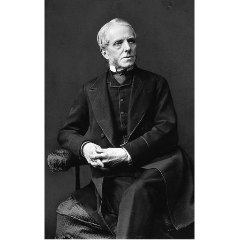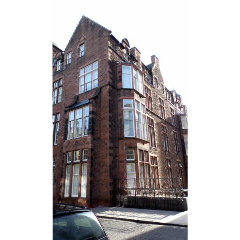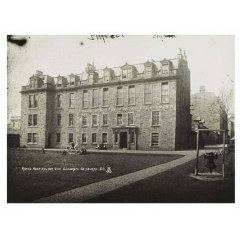
Royal College of Surgeons today
Nicolson Street, Edinburgh, EH8 9DW
Sir Henry Duncan Littlejohn was an expert in both forensic medicine and public health. He became President of the Royal College of Surgeons in 1875 and was appointed as Edinburgh’s first Medical Officer of Health in 1862. At the time he was also a police surgeon, medical adviser to the Board of Supervision, extramural lecturer, and crown medical examiner. Littlejohn gave forensic evidence at many famous murder trials, some of which are thought to have provided inspiration for Sir Arthur Conan Doyle in his writing of the Sherlock Holmes series. One of Littlejohn’s first acts as Medical Officer of Health was to publish his Report on the Sanitary Condition on the City of Edinburgh in 1865 which aimed ‘to test for the first time by reference to the mortality, the sanitary conditions of the portions of the city inhabited by the richer and the poorer.’ The conclusions of the Report highlighted the connection between poverty, overcrowding and sanitary conditions in Edinburgh in a way that meant these connections could no longer be ignored by the elite and wealthy. Littlejohn’s Report was thought to be so significant that for the next 12 days the Evening Courant and Caledonian Mercury newspapers published all 120 pages of the report in its entirety.
Photo credits: Ema Smekalova, Wikipedia



